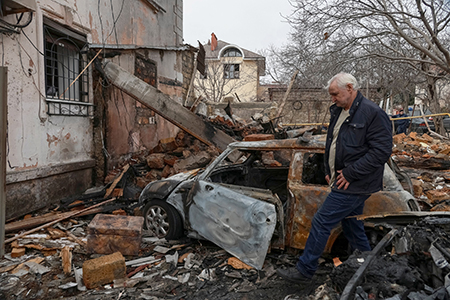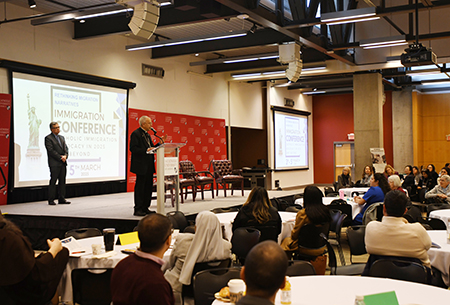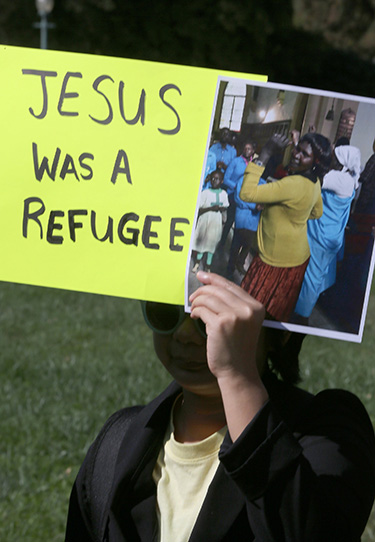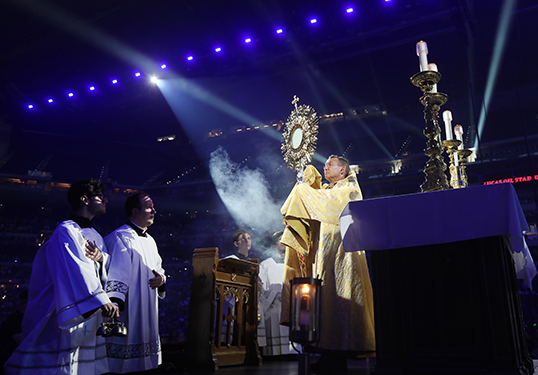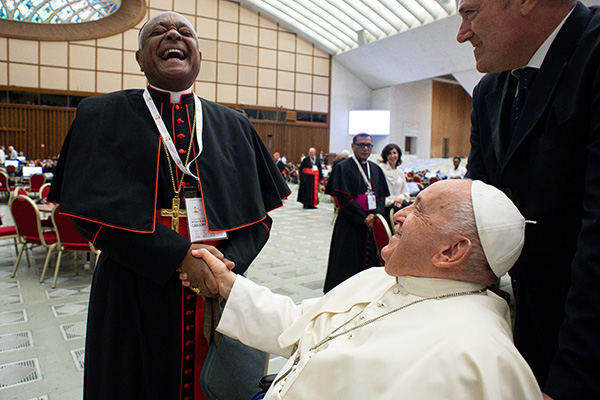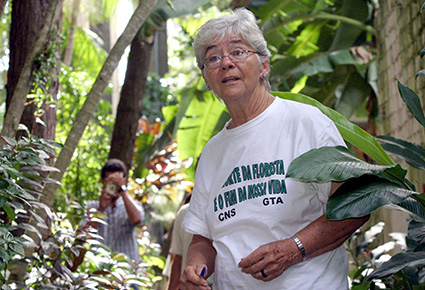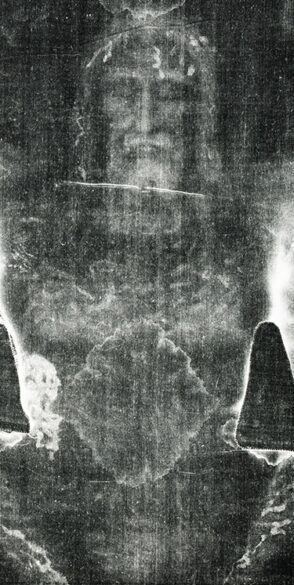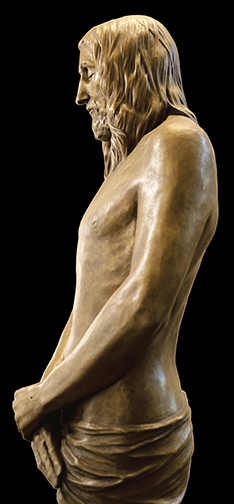By Kimberley Heatherington
WASHINGTON (OSV News) – Catholic agencies including Catholic Charities USA, Catholic Relief Services and Jesuit Relief Service/USA are facing major setbacks in the wake of the Trump administration’s 90-day pause and review of federal funding to numerous nonprofit organizations providing domestic and overseas aid to migrants, refugees and people in need.
Reversals, litigation and appeals have followed – but funds remain in limbo, and contracts have been terminated.
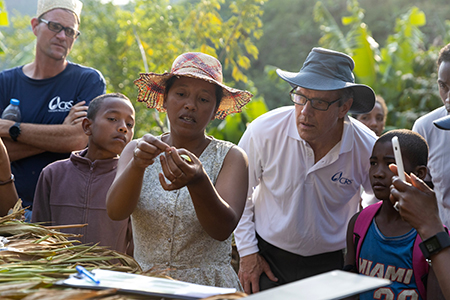
On Feb. 26 – after the U.S. Conference of Catholic Bishops filed suit challenging the funding suspension of its refugee admissions program – the U.S. State Department informed the USCCB its financial agreement would be terminated the next day, because the arrangement “no longer effectuates agency priorities.”
CRS is bracing for massive program cuts as high as 50%. Numerous Catholic Charities offices – including those in California, Kansas, New York and Texas – have scaled back operations and laid off staff. JRS/USA is trying to cover its funding gap, but laid off some 400 employees around the world.
While the cessation of funds has been devastating for these service-providing Catholic agencies, others that do not accept federal funds remain as active as before.
“Has the landscape changed? Absolutely. Has it changed irrevocably? Probably. Are we being asked to pick up where others can no longer function? Of course we will,” said Michael La Civita, communications director for the Catholic Near East Welfare Association, or CNEWA.
“This places a huge burden on the local church,” he said. “We work entirely through the local church – the local Eastern churches – and their landscape has been changed irrevocably, because the church doesn’t shut down. The church doesn’t change from one administration to the next. The church is present where her members are.”
Founded by Pope Pius XI in 1926, the New York-based CNEWA – an initiative of the Holy See – works through and with the Eastern churches to provide humanitarian and spiritual support in the Middle East, Northeast Africa, India and Eastern Europe.
As a Vatican agency, it operates independently of U.S. government funding – and instead raises its funds from individuals, family foundations, private grant organizations and partner agencies of the worldwide Catholic community. Material and spiritual aid is provided regardless of faith or religious creed.
While the funding freeze’s impact on other Catholic agencies will ultimately impact CNEWA as it attempts to help where others no longer can, La Civita remains optimistic.
“Things have changed so much and for the good in so many places, sometimes we lose sight of that,” he said. “And much of that has to do with, frankly, American Catholic generosity.”
American Catholics are “members of a global worldwide Catholic communion of churches – we’re not concerned about just what happens in our local parish; we’re concerned about the entire church,” he said.
With that perspective, La Civita is certain the U.S. faithful “will continue to respond to the question that was put to Jesus, ‘And who is my neighbor?’ I have great faith and hopes in our Catholic family, that it will continue to rise to the occasion.”
The Pontifical Mission Societies USA likewise does not receive government aid for its charitable work overseas. Its fundamental purpose is to share the faith, not specifically humanitarian works, but it does operate Missio, a crowdfunding platform that digitally connects donors with current and emerging projects in the pope’s missions.
“Even though we do fund some of the church’s charitable outreaches in missionary territories, most of the time we do so through church structures – dioceses, parishes, seminarians, religious orders, etc. – in missionary lands, building churches, seminaries, converts, charitable centers and other ecclesiastical infrastructure, so that they can better minister to their people,” said Msgr. Roger J. Landry, national director of the Pontifical Mission Societies USA.
Current Missio projects include helping flood victims in Nigeria, providing food and clothes to Holy Land residents, and aiding earthquake victims in Turkey and Syria.
“We are grateful for the missionary zeal and charitable generosity of American Catholics that make this work possible,” Msgr. Landry said in an email to OSV News. “We’re not asking them to do so through their taxes.”
Edward Clancy, outreach director for Aid to the Church in Need-USA – an international papal charity supporting persecuted and suffering Christians around the world – said a certain amount of autonomy accompanies a decision not to receive government funding.
“It’s a long-standing policy of the organization – both in the United States and internationally – not to create alliances with governments,” Clancy said. “Obviously, they have their pluses and minuses. Governments are going to have great power and great money. But oftentimes that comes at the cost of the freedom of what we’re supposed to be doing with the money as a Catholic organization.”
Under the guidance of the pope, Aid to the Church in Need has provided pastoral and humanitarian assistance for nearly 75 years to the persecuted church around the world. It proudly notes its donors have helped “the suffering, the distressed and the poorest of the poor” in over 145 countries.
“We prioritize certain objectives that might be accepted, or not, by governments,” Clancy said. “And again, we don’t want to be beholden to them for long-term aid.”
Clancy shared an example involving the U.S. Agency for International Development, America’s now-dismantled overseas aid bureau.
“We were funding a project in Nigeria; the church was supporting victims of Boko Haram after their recovery and renewal from many years of torture,” he said. “And when the USAID initially said they were interested in supporting a project, the local project partner was happy to accept the funding — but they didn’t want to allow themselves to be subject to some of the strings attached. And then when it was decided not to be sent, Aid to the Church in Need, thankfully, was able to find donors to help them and to make up the difference.”
Echoing La Civita, Clancy confirmed that Aid to the Church in Need remains untouched by the uncertainty that can accompany political shifts.
“Aid to the Church in Need continues to work regardless of any administration or decisions at government levels – because we do the work of the church,” Clancy said. “That’s our mission.”
Mary’s Meals – an international charity founded in 2002 that establishes school meal programs in some of the world’s poorest communities and is currently feeding almost 2.5 million children every school day – also said its operations would not suffer disruption.
“Mary’s Meals is not currently receiving any U.S. government aid, and so our programs are not directly impacted by this news,” Magnus MacFarlane-Barrow, the Catholic CEO and founder of Mary’s Meals, told OSV News in an email. “We have diverse income streams through affiliate organizations and fundraising groups in more than 20 countries, who help to guide our grassroots movement and philanthropic activity.”
That does not mean, however, that Mary’s Meals will not feel the funding freeze’s effects.
“The communities we serve will still be impacted, though, and at a time of acute need, any reductions in aid budgets are devastating and likely to cost many lives – including the lives of children,” MacFarlane-Barrow said. “Right now, the world’s poorest communities are urgently in need of more life-saving assistance, not less.”
A lack of reliance on government funding instead means dependence upon everyday charity.
“Being largely reliant on the generosity of individuals, through our thriving grassroots support, allows us to make free choices on where to deliver our programs based on where need is greatest and allows us to stay free from politics,” MacFarlane-Barrow said. “We will continue to build our movement based on our confidence in the innate goodness of people and their little acts of love. Mary’s Meals is – and has always been – a movement of people who are not going to sit and do nothing in the face of child hunger, even if governments fail, or are not able, to act.”
(Kimberley Heatherington writes for OSV News from Virginia.)

